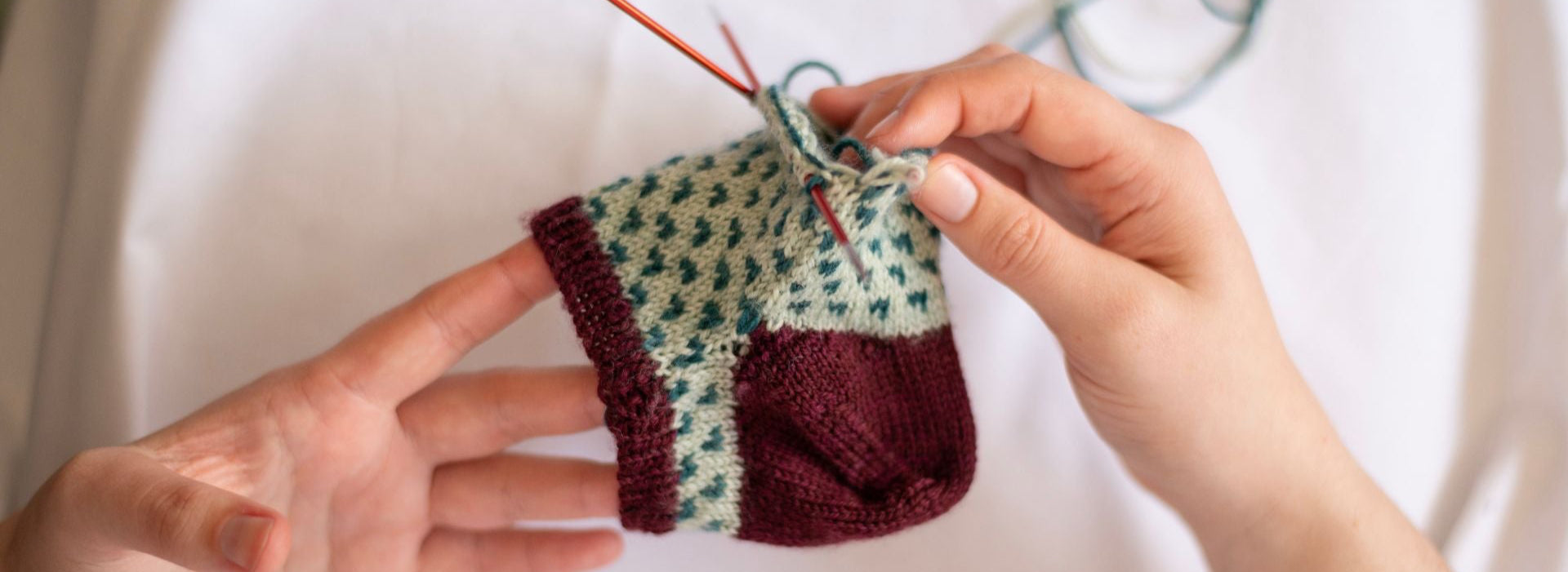In the world of sock knitting there are many different needle options to choose from. We like to recommend an array of sizes as well as types of needles depending on the knitter’s project and personal knitting style.
Generally we recommend metal needles for socks; KnitPro Nova or KnitPro Zing are both great options. Although you can get the wooden KnitPro Symfonie needles in sizes suitable for socks, which become very fragile at this small size. KnitPro do include an extra Double Pointed Needles in their sets at these small sizes for this reason.
The most common size needles for a 4 ply traditional sock are 2.25mm and 2.5mm. Depending on a person’s tension and desired fabric either can be used for a wonderful effect. I am a bit of a tight knitter and tend to choose 2.5mm needles unless I want a quite tight and sturdy sock, then I will use a 2.25mm. Others people may only use 2.25mm unless they are working a patterned stitch that is naturally tighter than straight stockinette stitch and therefore requires a larger needle.
There are three main different types of knitting needles you can use to knit socks; a set of double pointed needles, a long circular needle with an 80cm cable, or a small circular needle with a 25cm cable. Each needle choice has advantages and disadvantages and some knitters use only one option all the time and some change their needle choice based on the specifics of their project.

Magic Loop
I find Magic loop to be the most versatile and the best needle choice for socks knit on the go. With Magic Loop only a single circular needle with an 80 cm cable is needed for the whole sock and it is one of the most secure methods for transporting your work in progress. When you’re not knitting, all the stitches can be pushed back onto the cable and in no danger of coming off the needles, a nightmare for fine ply socks!
Another advantage of this technique is knitting “Two At A Time (TAAT)” socks, I have even seen 12 at a time online! One of the downfalls of Magic Loop is the shuffling of the stitches from the cable to the needle twice every row. This can be a little cumbersome and slow down your sock knitting which is why some people prefer to not knit with Magic Loop.

Tiny Circular Needles
If Magic Loop isn’t for you, there is the option of knitting your socks on tiny circular needles with a 25cm cable. With these needles you are able to knit the leg and foot of the sock continuously, not having to shuffle your stitches. However, eventually to finish your toe you will need to use either DPNs or Magic Loop. One of the possible challenges with the tiny circular needles is the very small length of the needle itself which can be either awkward to hold in one’s hand or even painful for someone who experiences RSI or strain on their hands while knitting.

Double-Pointed Needles
Double-pointed needles, or DPNs, are the original way to knit in the round and still a favourite of many knitters. Your stitches are divided across three or four needles and you knit all the stitches from each needle in a circular direction. This can be less fiddly than Magic Loop to some knitters but also a little less secure in that there’s multiple needle ends for stitches to accidentally fall off from.



